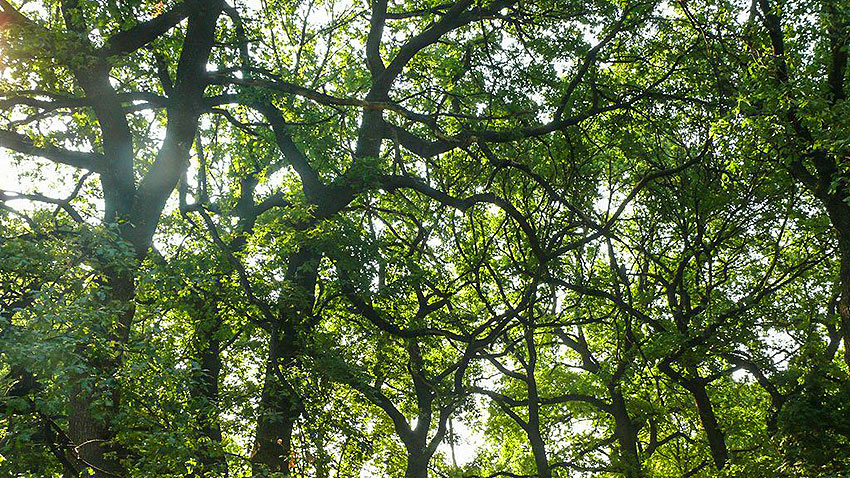A new eco-tourist route which follows the valuable plant species is to attract environmentalists and tourists in the heart of the Bulgarian capital Sofia. The capital city has a unique, yet little known treasure - the century-old trees. Most of them witnessed significant historical events or were planted by renowned Bulgarians. These living monuments are now under the spotlight to tell us their stories.
The greenery in the surrounding areas is what mostly impresses the foreigners, when they land at Sofia Airport. Those who live here are never pleased enough with the vegetation in the capital city. However, people who visit the city for the first time are amazed by the beautiful parks where they can retire and relax in the hot summer days. Sunken in our busy daily round, we fail to pay attention to the diversity of the tree species which surround us. The venerable trees in Sofia loom amidst the whole greenery, yet threatened by the investors’ appetites. We can come across many places with a number of century-old deciduous species such as the Hungarian oak (Quercus Frainetto), elm tree, mulberry tree, sophora trees, Tree of Heaven, etc. However, the English oak is the most popular tree among the venerable species which grow in Sofia’s parks and gardens. This natural wealth growing in the very center of the Bulgarian capital Sofia was explored, registered and entered into the card index, in order to become more popular among the citizens and the guests of Sofia. It turned out that a total of 90 venerable trees grow in Sofia. The oldest one is a mulberry tree which grows on Iskrets street. Its stem is 4.1 meters wide and is approximately 650 years old. One would definitely feel respect towards this species which has witnessed Bulgaria’s changing history. Everyone who wishes to get acquainted with this natural treasure can buy a special map and follow in the tracks of the city history. For the purpose, the young team of Environmental Partnership Foundation, jointly with two other non-governmental organizations, has developed three main routes. The first one includes trees growing in the very city center, especially in the garden of the National Art Gallery and the National Museum of Ethnography. Over 200 acacia, elm-trees, sophora and trees of heaven grow there. A 400 year-old English oak is among them. Another sight also joined the Sofia eco-tourism route. It grows in the botanical garden of the Saint Kliment Ohridski University of Sofia near the monument of the Apostle of Freedom Vasil Levski. We are talking about a wonderful Oak tree. Its crown stands out among the other 1,500 plant species growing there. In 1892 King Ferdinand himself planted this tree, placing a golden coin in its roots.

"Two-century old English Oaks can be also seen in the Boris Garden, which is crossed by the other eco-route. Most of the English Oaks in this garden grow around the Ariana Lake and the Lake of the Lilies", explains Lubomira Kolcheva, Director of the Environmental Partnership Foundation. The third route takes tourists to Sofia’s Lozenets district where nearly twenty Oak trees also known as Slaveykov Oaks grow in a small garden hugging between several blocks of flats. The meetings of the “Missul” (Thought) Literature Circle were held there. Renowned Bulgarian poet Pencho Slaveykov wrote some of his best pieces under the shadow of these Oak trees. Another historic tree can be seen in Lozenets district - the 135-year-old Oak planted by Slovene linguist Anton Bezenšek, who adapted the Gabelsberger system to the South Slavic Languages, including the Bulgarian language. How these green routes in the Sofia city center will be promoted?
“We are planning to print information maps and distribute them through the Tourist Information Center in Sofia to other parts of the capital", Lubomira Kolcheva goes on to say. "Information about these maps is uploaded on vekovnite.org. It is important to appreciate our natural wealth, although we do not know well our landmarks. These century-old trees grow in very lively places and many people rest under their shadows and enjoy their magnetic looks.”
English version: Kostadin Atanasov
Caretaker Minister of Tourism Evtim Miloshev opened the 19 th International Exposition “Cultural Tourism” in Veliko Tarnovo, with the participation of 10 countries as well as 30 Bulgarian municipalities. In his address, Minister Miloshev..
From 8 to 10 October, the Business Centre in Veliko Tarnovo will host the 19th edition of the International Exhibition of Cultural Tourism. The specialised exhibition for cultural tourism will present the tourism potential in the field of culture of..
The number of tourists will go up by 20-25% during the coming winter season, tour operators believe. However, they say that the people intending to come to Bulgaria’s resorts are waiting to see a more stable weather forecast due to climate change...

+359 2 9336 661
